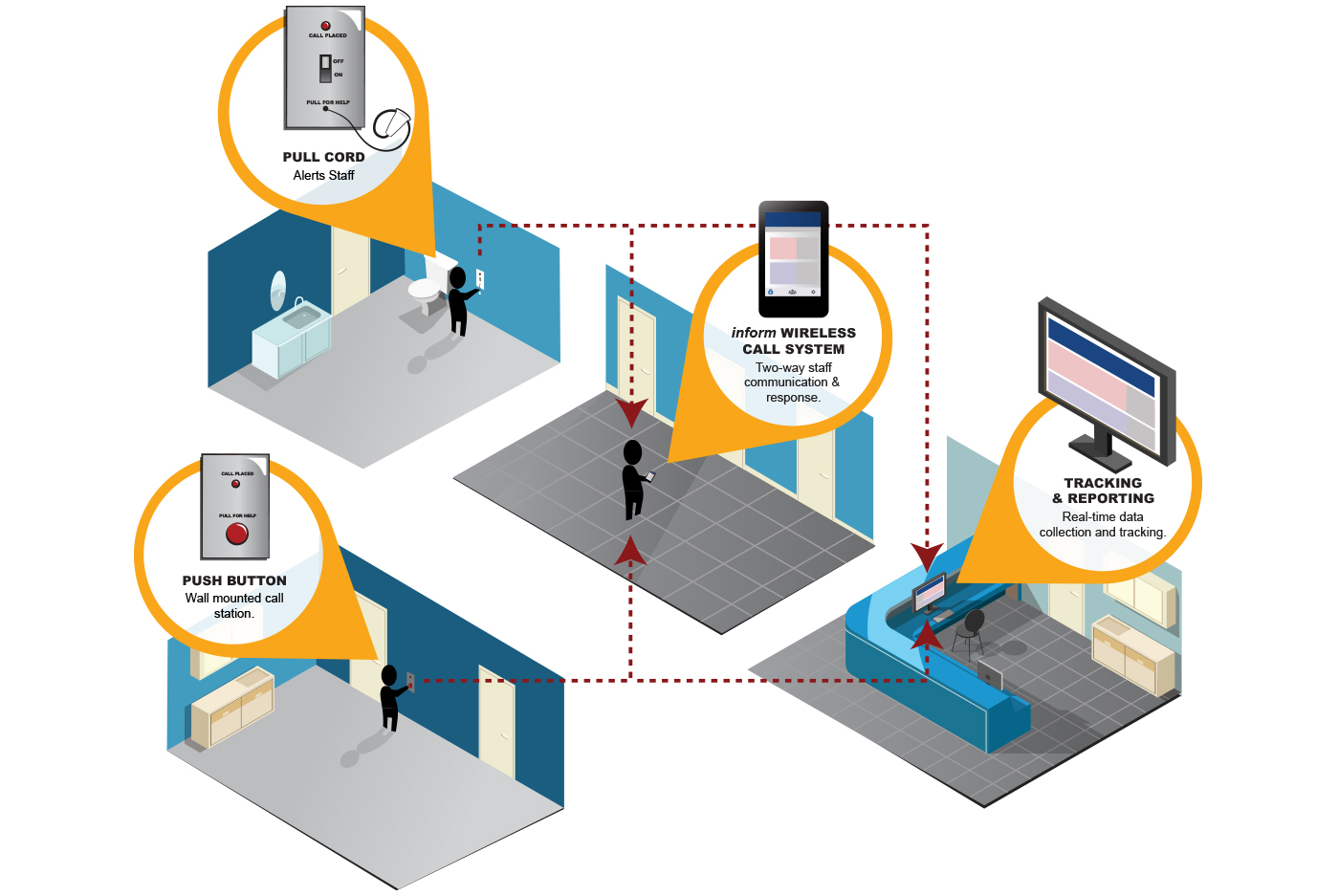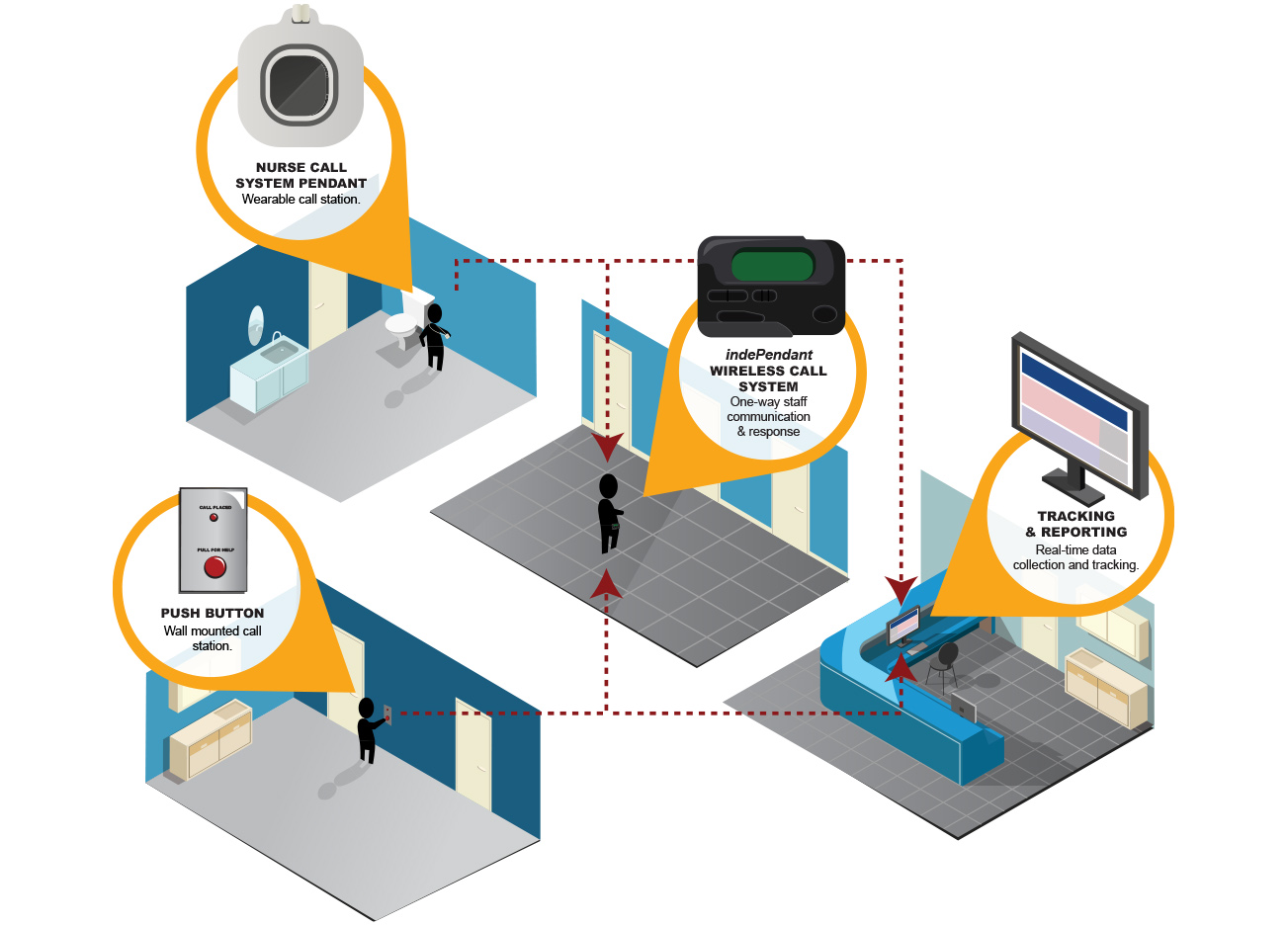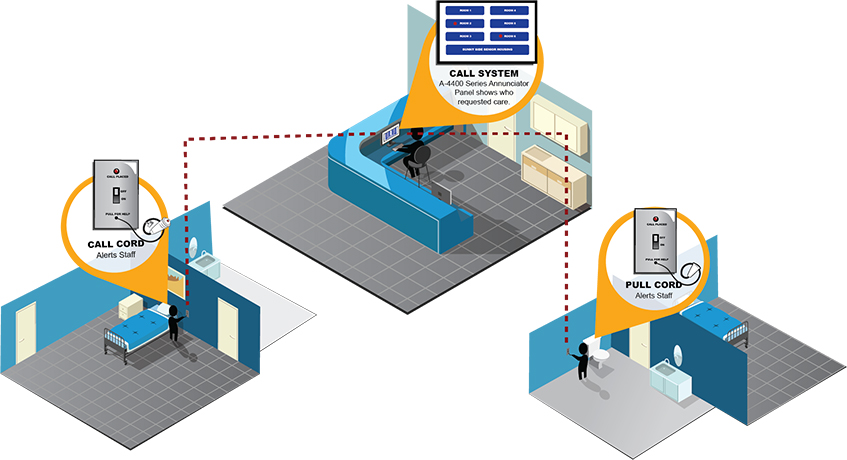Area of Refuge Requirements in Maine
Emergency Call Systems >> Area of Refuge Systems >> Area of Refuge Requirements >> Maine
-Updated April 2023
Does your Maine Building Meet Local Area of Refuge Requirements?
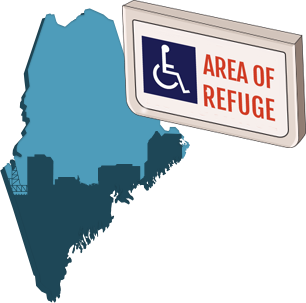 Knowing local area of refuge requirements can save your firm tens of thousands of dollars in fines. Please see below to view the overview of what is required in your area. Be sure to check local codes before building in Maine. Cornell Communications is the expert on area of refuge systems and strives to clarify the local building codes. However, be sure to check local building codes with your AHJ or state official before building in Maine. Contact us today for assistance!
Knowing local area of refuge requirements can save your firm tens of thousands of dollars in fines. Please see below to view the overview of what is required in your area. Be sure to check local codes before building in Maine. Cornell Communications is the expert on area of refuge systems and strives to clarify the local building codes. However, be sure to check local building codes with your AHJ or state official before building in Maine. Contact us today for assistance!
| Maine Area of Refuge Requirements | ||
|---|---|---|
|
IBC |
NFPA 72
|
ADA
|
|
2015 |
2019
|
2010
|
Code Definitions
IBC: The International Building Code model provides minimum means of egress (building evacuation path) requirements to protect public health, safety, and general welfare of the occupants of new or existing buildings.
NFPA 72: The National Fire Alarm and Signaling Code (known as NFPA 72) details the latest safety provisions to meet fire detection, signaling, and emergency communication demands.
ADA: The Americans with Disabilities Act includes regulations surrounding means of egress accessibility requirements. 2010 ADA standards outline when a building’s means of egress requires an area of refuge.
IBC 2015 Means of Egress Requirements
According to IBC Section 1009, accessible means of egress require an area of refuge. Areas of refuge are required in all new multi-story commercial buildings and additions/renovations that are considered new construction.
Requirements:
Every required area of refuge shall be accessible from the space it serves by an accessible means of egress.
Two-way communication systems shall provide communication between each required location and the fire command center or a central point location approved by the fire department. Where the central control point is not a constantly attended location, the two-way communication system shall have a timed automatic telephone dial-out capability that provides two-way communication with an approved supervising station or 9-1-1. The two-way communication system shall include both audible and visible signals.
Exemptions:
- Buildings with supervised automatic sprinkler systems throughout (Building does not require the protected are but the Cornell Two-Way Communication System is still required)
- Assisted living facilities
- Healthcare facilities
- Prisons and Penitentiaries
- Residential Psychiatric Facilities
- Drug Rehab Facilities
NFPA 2019 Two-Way Emergency Communication System
The communications system shall comprise remotely located communications stations, a master control unit, and a primary and secondary power supply.
The physical locations of the remote communications stations and the master control unit shall be as designated by the building code in force and the system designer and approved by the authority having jurisdiction. The specific location of each remote communications station shall be identified on the master control unit display on a floor and area basis. The remote communications stations shall provide for hands-free, two-way communication, provide an audible and visual signal to indicate communication has occurred, and indicate to the receiver the location sending the signal.
When a remote communications station(s) is activated by a building occupant(s), a two-way live voice communication shall be required to operate between the remote communications station(s) and a constantly attended location. The master control unit shall be installed in a central control point within the building. The constantly attended location shall be located either within the building or at an off-site monitoring location and shall be approved by the authority having jurisdiction.
If the central control point is not constantly attended, the master control unit shall have a timed automatic communications capability to connect with an off-site constantly attended monitoring location approved by the authority having jurisdiction, where trained personnel can initiate the appropriate response.
In the event of an off-site connection, a signal shall be transmitted to the off-site monitoring location, identifying the specific building prior to initiating the live voice two-way communication. All pathways between the remote communications stations and the master control unit shall be monitored for integrity.
Area of refuge wired emergency communications systems that are installed where the building has less than 2- hour fire-rated construction shall have pathway survivability of Level 1, 2, or 3. Area of refuge wired emergency communication systems that are installed where the building has 2-hour fire-rated construction or greater shall have pathway survivability of Level 2 or 3.
Pathway Survivability Level 1
Pathway survivability Level 1 shall consist of pathways in buildings that are fully protected by an automatic sprinkler system in accordance with NFPA 13 with any interconnecting conductors, cables, or other physical pathways protected by metal raceways or metal armored cables.
Pathway Survivability Level 2
Pathway survivability Level 2 shall consist of one or more of the following:
- 1.2-hour fire-rated circuit integrity (CI) or fire-resistive cable
- 2.2-hour fire-rated enclosure or protected area
- 3.* Performance alternatives approved by the authority having jurisdiction
Pathway Survivability Level 3
Pathway survivability Level 3 shall consist of pathways in buildings that are fully protected by an automatic sprinkler system in accordance with NFPA 13 and one or more of the following:
- 1.2-hour fire-rated cable system [electrical circuit protective system(s)]
- 2.2-hour fire-rated circuit integrity (Cl) or fire-resistive cable
- 3.2-hour fire-rated cable system [electrical circuit protective system(s)]
- 4.2-hour fire-rated enclosure or protected area
- * Performance alternatives approved by the authority having jurisdiction
Instructions for the use of the two-way communications system, instructions for summoning assistance via the two-way communications system, and written identification, including in braille, of the location, shall be posted adjacent to each remote communications station.
ADA 2010 Means of Egress Requirements
According to ADA Section 207, accessible means of egress require an area of refuge. Areas of refuge are required in all multi-story commercial buildings. Exceptions:
- Where means of egress are permitted by local building or life safety codes to share a common path of egress travel, accessible means of egress shall be permitted to share a common path of egress travel.
- Areas of refuge shall not be required in detention and correctional facilities
Area of Refuge Systems for Maine
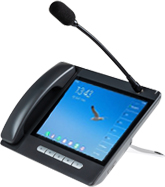 The state of Maine requires all areas of refuge that are one or more stories above or below the level of exit discharge are equipped with a two-way communication system like Cornell’s Sentinel AOR system (IBC 1009.6.5). According to IBC 1007.8.1 and 1007.8.2 two-way communication systems at areas of refuge must:
The state of Maine requires all areas of refuge that are one or more stories above or below the level of exit discharge are equipped with a two-way communication system like Cornell’s Sentinel AOR system (IBC 1009.6.5). According to IBC 1007.8.1 and 1007.8.2 two-way communication systems at areas of refuge must:
- Provide communication between each required location and the fire command center or a central control location
- The fire department must approve the central control location
- Have a timed automatic telephone dial-out capability to a monitoring location or to 9-1-1
- Include both audible and visible signals
A two-way communication system is not required in areas with ramps, near freight elevators or near service elevators that are not designated as part of the accessible means of egress.
Cornell’s Sentinel AOR system is designed to meet all of Maine’s building code requirements. Receive a free quote today!
| Free Build Quote |
Area of Refuge Signage Requirements in Maine
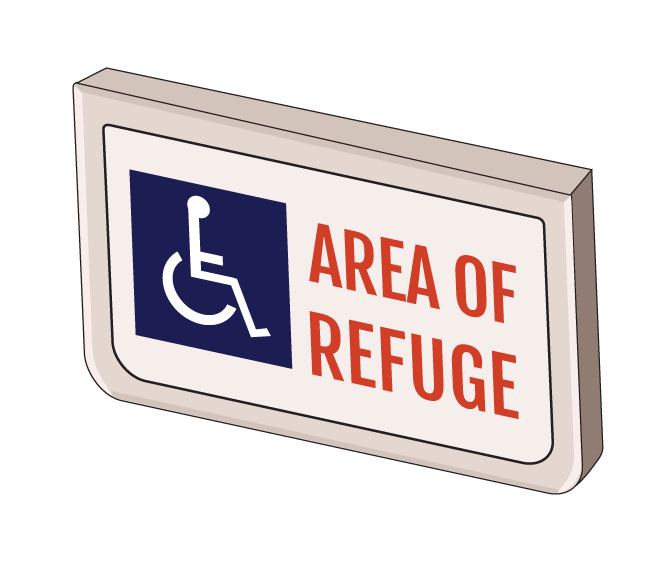 Maine building code requires areas of refuge are clearly marked with appropriate signage. IBC 1011.1 states:
Maine building code requires areas of refuge are clearly marked with appropriate signage. IBC 1011.1 states:
- Each door providing access to an area of refuge from an adjacent floor area shall be identified by a sign stating: AREA OF REFUGE
- Each door providing access to an exterior area for assisted rescue shall be identified by a sign stating: EXTERIOR AREA FOR ASSISTED RESCUE
- Signage must comply with ICC A117.1 requirements
- Signage must be illuminated where exit sign illumination is required by IBC 1011.2
Design an Area of Refuge System for Maine Buildings
Still have questions? Don’t worry, we’re here to help. Cornell Communications is an industry leader in area of rescue systems, nurse call systems and more. Get a quote on a Sentinel AOR system or contact a Cornell representative for more information on area of refuge requirements in Maine.

